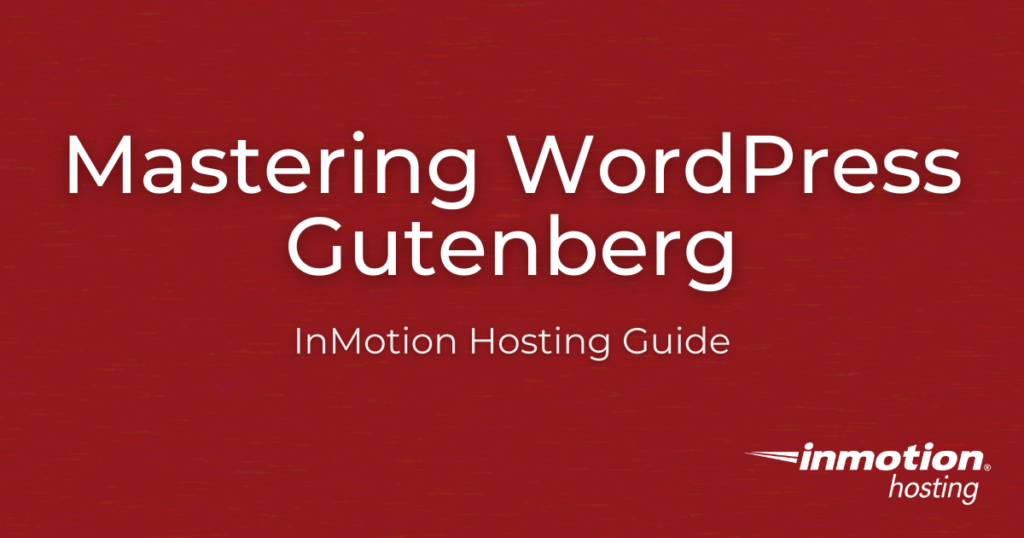The HTTP Headers WordPress plugin allows WordPress Hosting administrators to create and manage HTTP headers to improve security, privacy, and performance for visitors without needing to manually edit the .htaccess file. This is useful for: In this article, we’ll discuss the most popular HTTP security headers available within the HTTP Headers WordPress plugin that can Read More >
Search Results for: HTTP Headers WordPress
WordPress HTTP Headers Plugin – Export and Import Settings
The HTTP Headers plugin advanced settings allow you to easily export and import its settings for faster WordPress site setup. Before you continue: Export Click Export to download the SQL settings file. Import Click Choose file… to choose a file. Then, Import Settings. Our WordPress Hosting can improve your small business website performance without any Read More >
The Ultimate Guide to Optimizing WordPress Performance
In our Ultimate Guide to High Performance WordPress for High Traffic Sites, we will show you how to identify and fix common performance issues with WordPress and the server it’s hosted on. Our guide combines over 20 years of experience of fine-tuning servers, CDNs, and website code to deliver high performance WordPress sites. If you’re Read More >
How to Use the Search Block in WordPress FSE
The Search block is a widget used to search the published content of your WordPress site. This tutorial will show you how to use the search block in the WordPress Full Site Editing (FSE) system. We will also provide some background information on the block and how it works with your WordPress site. How to Read More >
How to Build a Website Using Patterns in WordPress FSE
WordPress websites are often built based on a theme, and they often have predefined formats on what their pages will look like. With patterns, you can take a simple theme like the default Twenty Twenty-two theme and use the full site editing system to create your own template. Since free Patterns are also available on Read More >
How to Pick Block-based Themes in WordPress
Block-based themes allow users to use the full site editing features of WordPress. With the integration of the site editor in the WordPress 5.9 release, developers have become more active in releasing block themes. This article highlights three block themes that have been released. We will provide descriptions of the themes that can help you Read More >
How to Use Patterns in the WordPress Editor
The simple definition of patterns is that they are a combination of WordPress blocks. Patterns result from the block system and block-based themes becoming more prevalent in WordPress editors. The patterns option in the visual editor gives you access to the pre-created block combinations for quick page creation. For example, you could use patterns to Read More >
Working with Template Parts in the WordPress Full Site Editor
Template parts are patterns of blocks in a WordPress theme that can be used when building your site. For example, headers and footers and variations of them are considered template parts. This tutorial will walk you through the steps of creating and editing a template part in the WordPress full site editor. We will also Read More >
Tove: A WordPress Theme Built For Full-Site Editing
As WordPress 5.9 prepares to move the world’s most popular CMS closer to an entirely full-site editing (FSE) experience, users can expect new theme and plugin releases designed to incorporate and work alongside FSE. Tove is one of those themes. Officially released in the WordPress Theme repository on September 17, it is brand new, and Read More >
WordPress Pattern Directory
WordPress 5.8 is just around the corner, and with it comes the introduction of the all-new Pattern Directory for WordPress block patterns. These new features mark the beginning of WordPress transitioning to a full site editing experience via the Gutenberg block editor. In this article, we will introduce you to the pattern directory and its Read More >
WordPress Full Site Editing
With the release of WordPress 5.8 around the corner (July 20), there has been a lot of buzz around full site editing. Full site editing (FSE) is a WordPress project that aims to make entire websites customizable by utilizing Gutenberg blocks, and users will get their first taste of it with WordPress 5.8. In this Read More >
Create a WordPress Plugin: A Tutorial
In this guide we’ll walk you through creating your very first WordPress plugin. This will just be a simple plugin that adds some extra info to all of your posts. Using these same steps you can design and implement your own WordPress plugins! Remember, this is just an instructional plugin meant to show you the Read More >
3 Best Mixpanel WordPress Integration Methods
Mixpanel is a powerful, on-site web analytics application focused on complex event tracking and A/B testing for deep user behavior analysis. Externally hosted on Mixpanel.com, the analytics toolkit can produce in-depth dashboards and experiments based on what users do in webpages, contact forms, and other interactive website elements. This will help you improve customer retention Read More >
Using Stackable for WordPress
Gutenberg, the visual editor for WordPress, is a primary focus of development for Automattic, the parent company of WordPress. Mainly, they are focusing on making the process of building a website, a page, or post into a visual tour de force that doesn’t require that you write code. Stackable provides designs, custom blocks, UI kits, Read More >
Redux – Gutenberg Blocks Library for WordPress
If you’re looking for a way to increase the options that Gutenberg blocks offers, then look no further than Redux – Gutenberg Blocks Library & Framework. With over a million installs and thousands of possible sections and templates, you may be overwhelmed with the creative possibilities that you are given for your WordPress site. We Read More >

What is the Gutenberg WordPress Block Editor?
What is the Gutenberg WordPress Block Editor and why is there so much buzz around blocks? Starting off solely as a plugin and then becoming part of the WordPress core, the Gutenberg WordPress editor revamped the classic editor and provided an even easier content creation experience for users.
With an intuitive, clean interface, the Gutenberg WordPress editor allows you to easily add and customize blocks within your pages and posts. In addition to basic content needs like paragraphs, headers, and lists, Gutenberg also provides easy to use blocks for embedding YouTube videos, creating image slideshows, adding call to action buttons, and more.
However, before jumping into Gutenberg’s functionality, in true WordPress fashion, there are two references to Gutenberg that you should be aware of: Gutenberg in the WordPress core and the Gutenberg plugin.
Gutenberg Plugin
Before it became part of the WordPress core, Gutenberg was solely a plugin. Currently, the plugin, which can still be downloaded and installed, is used mainly for additional features not yet available with the WordPress core version of Gutenberg. If you’re interested in keeping an eye on new features, installing the Gutenberg plugin in WordPress is probably a good idea.
Gutenberg in the WordPress Core
Gutenberg joined the WordPress core with the release of 5.0. Now, each updated version of WordPress also includes updates to Gutenberg and the block library. Though the Gutenberg features included with the WordPress core are usually behind the features of the Gutenberg plugin, it still includes a number of blocks to satisfy any WordPress user.
Now that you know a little about Gutenberg, let’s master the new WordPress editor.
WordPress Gutenberg Basics
Though the WordPress Gutenberg editor is easy to use, there is still a small learning curve to overcome in order to master the editor. Explore our WordPress Gutenberg basic articles to learn how to navigate the editor and create media-rich pages and posts.
- Getting to Know Gutenberg
- Learn How to Install Gutenberg Plugin (Optional)
- How to use the Content Structure Option in Gutenberg
- How to Add Anchor Links with the Visual Editor in WordPress
- Using Inline Images versus the Image Block
- Using the Group Block in WordPress
- How to use the Spacer Block in WordPress
- Using Ultimate Addons for Gutenberg
WordPress Gutenberg Advanced
Once you have the basics down, you can use Gutenberg to create highly stylized pages and posts, then save certain blocks to be reused on future pages and posts. With the help of plugins, you can also animate your Gutenberg blocks, configuring them to flip, fade, and rotate on to the page to engage your visitors. Explore our WordPress Gutenberg advanced articles to learn how to get the most out of the block editor.
- Working with the Code Editor in WordPress
- How to Create Reusable Blocks in WordPress
- How to Use Gutenberg Hub’s WordPress Gutenberg Blocks Library
- How to Add Gutenberg Block Functionality to WordPress Widget Areas
- How to Use the Recipe Block in WordPress
- Using the WordPress Book Review Plugin Block
- Install and Use the Advanced Editor Tools WordPress Plugin
- Add WordPress Animation to Gutenberg Blocks with Editor Plus Plugin
Latest Gutenberg Tutorials
- Using the Plus Addons for Gutenberg
- Redux – Gutenberg Blocks Library for WordPress
- How to Use Gutenberg Hub’s WordPress Gutenberg Blocks Library
- How to Use the Recipe Block in WordPress
- Add WordPress Animation to Gutenberg Blocks with Editor Plus Plugin
- Using the WordPress Book Review Plugin Block
- Install and Use the Advanced Editor Tools WordPress Plugin
- Gutenberg 9.1 Release Updates
- How to Add Gutenberg Block Functionality to WordPress Widget Areas
- How to Create Reusable Blocks in WordPress
- Gutenberg 8.6 (Plugin) Update
- Gutenberg 8.5 (Plugin) Update
- Using the Group Block in WordPress
- How to use the Spacer Block in WordPress
- Using Inline Images versus the Image Block
- How to Add Anchor Links with Gutenberg in WordPress
- Working with the Code Editor with Gutenberg WordPress
- Ultimate Addons for Gutenberg Plugin
- Using a Full-Width Editor Plugin for Gutenberg WordPress Hosting
- Can I Use the Classic Editor Instead of Gutenberg in WordPress?
- How to use the Content Structure in Gutenberg
- Learn How to Install the Gutenberg Plugin
- What is Gutenberg?
Using the WordPress Book Review Plugin Block
Book lovers unite! As of March 2020, all generations saw a considerable increase in reading. With the change in how we’re able to spend our free time, there is no wonder that reading has increased overall about 33%. Even better, if you have a WordPress website or blog, you can easily attract and retain fellow Read More >
How to Install the Wordfence WordPress Security Plugin
There are many essential types of WordPress plugins for the best performance needed by small and mid-size businesses (SMBs). Below we’ll focus on how to secure WordPress with the Wordfence security plugin. Wordfence has been one of most popular WordPress security plugins for years because of its long list of features: Below we’ll cover some Read More >
How to Install the Really Simple SSL WordPress Plugin
In this guide we’ll show you how to install the Really Simple SSL WordPress plugin. It’s often easier to use such a plugin to force a large, existing WordPress site to use a free or paid SSL certificate (HTTPS) than attempting an .htaccess redirect and manually fixing mixed content errors (not to be confused with Read More >
Getting Started with the All In One SEO Pack WordPress Plugin
Search engine optimization (SEO) helps people find your organization and website among search engine results in Google, Bing, DuckDuckGo, etc. There are many important components to improving SEO: It’s a lot of work, especially when you’re new to the topic and don’t have actionable guidelines to walk you through related tasks. Fortunately, there is a Read More >
